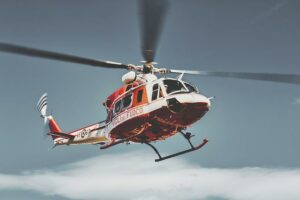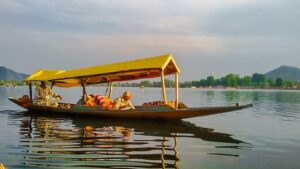In this article, we shall discuss how to convert sound energy to kinetic energy along with some examples with detailed facts.
The sound waves travel in the air in the longitudinal wave fashion due to the oscillatory motion of the particles parallel to the direction of propagation of the wave.
How is sound energy converted to kinetic energy?
The sound energy is generated through the vibrational energy when the system is perturbed due to external force and energy.
This vibrational energy is carried by the molecules present in the system and moves further as long as the energy is vanish converting the sound energy into kinetic energy.
Sound Energy to Kinetic Energy Examples
Following is a list of examples that we are going to discuss further in this article below:-
Bow and Arrow
The string imposing an elastic force on the arrow produces sound energy which further provides kinetic energy to the arrow to traverse through the medium.
Roller Coaster
The loud noise is produced due to the friction of the roller coaster on the surface of the mechanized structure thus moving the roller forward.
Flowing Water
The flowing water washes away the debris and sediments along with it and the sound energy is produced due to the abrasion and friction. The volume of water moves to gush the debris and obstacles with kinetic energy.
Rocket
A large amount of fuel is used to ignite the rocket to produce enough trust to oppose the gravitation attraction.

The sound energy is thus produced due to the ignition of the fuel and trust imposed on the ground resulting in the kinetic energy of the rocket.
Thundering
The sound energy is produced when there is a discharge of the charged electrons from the cloud which is inevitable for the rain moving with the kinetic energy towards the ground.
Fans
The sound energy is produced due to the friction of the wind on the surface of the propellers. The abrasion of the wind sets them in kinetic energy due to the centripetal acceleration of the propellers of the rotating fan.
Ocean Roars
The ocean roars are produced due to the rise and collapse of the oceanic waves and the vibrational energy produced as the waves hit the surrounding rocks and other obstacles. This produces the oscillation of the water molecules carrying the vibrational energy hitting on the shoreline.
Helicopter
The propeller of the helicopter moves at such a fast speed to produce a trust on the ground to lift the helicopter.

The abrasion of the wind on the propeller produces the sound energy which is responsible for the uplifting and acceleration of the copter.
Woofers
The woofer moves back and forth producing the longitudinal wave traveling through the air, transmitting its vibrational energy to the molecules in the medium. Due to these vibrations, the tiny objects kept near the loudspeaker also start vibrating.
Mosquito’s Wings
The wings of the mosquitoes make that quench sound when the mosquito flies in the air.
Opening Doors
While opening the door, the sound of the door is produced due to the friction of the hinges.

Eardrum
As the sound waves incident on the eardrum, the eardrum vibrates as the energy of the compression and rarefaction of the wave transfers the energy on the eardrum thus vibrating it.
Echo
The sound wave will reflect back to the listener after hitting on the obstacle on its wave.
Tuning Fork
On hammering the tuning fork it will starts vibrating forming the longitudinal wave producing sound energy.
Whistle Balloon
As the air will escape from the balloon, it will make a whistling sound swaying the balloon in the opposite direction of the escaping air from the balloon.
Rowing Boat
While pushing the water backward, the boat will travel in a forwarding direction. The sound energy of the water will be accompanied by the kinetic energy of the boat.

Drumming
While drumming, the vibrations are set up on a drum. This vibrational energy is transmitted in the air molecules within the drum and outside the drum and starts oscillating producing the longitudinal wave. These waves then propagate in the surroundings reaching our eardrums.
Microphone
The sound waves incident on the microphone is converted into electric signals and is amplified by the loudspeakers. These waves then travel in all directions by transmitting, reflecting from the obstacles, as far as the vibrational energy is carried by the particles.
Starting the Engine of a Vehicle
The sound energy is produced by the motion of the piston compressing the air producing heat energy required for the combustion of fuel. This supplies energy to the car battery and is converted into kinetic energy accelerating the car.
Frequently Asked Questions
How kinetic energy is produced from sound energy?
The kinetic energy signifies that the object is in motion.
The motion of an object will undergo friction and abrasion due to which a part of the energy will lose producing sound energy and heat.
Why sound energy is equivalent to vibrational energy?
The sound wave travels in the longitudinal wave.
The oscillation of the particles in the wave possessing vibrational energy is in the direction of propagating wave.
Also Read:
- How to optimize kinetic energy recovery in electric bicycles during braking
- How to find elastic energy in spring systems
- Gravitational potential energy formula
- How to utilize gravitational energy in clock mechanisms
- How to find potential energy in elevated water storage
- How to find energy dimension
- How to optimize chemical energy release in eco friendly fertilizers
- Example of electrical energy to chemical energy
- Binding energy
- How to design potential energy based emergency power systems for high rise buildings
Hi, I’m Akshita Mapari. I have done M.Sc. in Physics. I have worked on projects like Numerical modeling of winds and waves during cyclone, Physics of toys and mechanized thrill machines in amusement park based on Classical Mechanics. I have pursued a course on Arduino and have accomplished some mini projects on Arduino UNO. I always like to explore new zones in the field of science. I personally believe that learning is more enthusiastic when learnt with creativity. Apart from this, I like to read, travel, strumming on guitar, identifying rocks and strata, photography and playing chess.